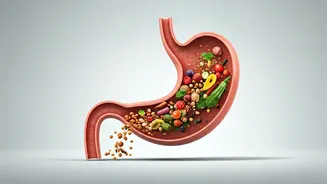Winter's Vitamin Drop
Even in regions with abundant sunshine, winter can create a Vitamin D deficiency. This is primarily because of reduced UVB radiation, which is essential
for the skin's synthesis of Vitamin D3. Furthermore, seasonal changes lead to spending less time outdoors, limiting sun exposure. This combination can result in inadequate Vitamin D levels. The decline in Vitamin D is especially significant in those living in higher latitudes. It is critical for maintaining overall health. Addressing this issue involves awareness, lifestyle adjustments, and, if needed, supplementation to ensure that your body has enough of this crucial nutrient to thrive throughout the colder months.
Recognizing Deficiency Signs
A Vitamin D deficiency can manifest in various ways, often with subtle symptoms that are easily overlooked. Common indicators include fatigue, as the body struggles to maintain energy levels without enough Vitamin D to regulate various functions. Bone pain and muscle weakness are also prevalent, since Vitamin D supports calcium absorption, essential for bone health. Mood changes, such as increased feelings of sadness or depression, can also signal a deficiency, as Vitamin D influences brain function and mood regulation. Furthermore, weakened immunity, making you more susceptible to illnesses, is another warning sign. Recognizing these symptoms is the first step toward addressing a possible Vitamin D deficiency, prompting you to seek ways to increase your levels and restore vitality.
Food Sources and Intake
While sunlight is the primary source of Vitamin D, dietary intake plays an important role, particularly during times when sun exposure is limited. Fatty fish like salmon, mackerel, and tuna are excellent sources, providing significant amounts of Vitamin D. Eggs, especially the yolks, also contain Vitamin D, though in smaller quantities. Fortified foods, such as milk, yogurt, and cereals, are often enriched with Vitamin D to help increase intake. However, it's essential to check the labels to determine the actual Vitamin D content. Incorporating these foods into your diet regularly, especially during winter months when sun exposure is low, is essential to bolstering your Vitamin D levels.
Supplementation Considerations
For many, dietary sources alone may not be enough to reach optimal Vitamin D levels, particularly during winter. Supplementation can be a useful way to bridge the gap. Vitamin D3 is the preferred form because it is more effective at raising blood levels compared to Vitamin D2. The appropriate dosage varies depending on individual needs and deficiency levels. Consulting with a healthcare professional before starting supplementation is vital to determine the right dosage for you and avoid any potential side effects. Regular blood tests can monitor Vitamin D levels, helping to assess the effectiveness of supplementation and make any necessary adjustments. This personalized approach to supplementation ensures you're effectively addressing any deficiencies.
Lifestyle Strategies & More
Alongside diet and supplementation, certain lifestyle choices can support healthy Vitamin D levels. Whenever possible, spending time outdoors, especially during periods of peak sunlight, can help. Even short periods of sun exposure can make a difference. However, be cautious of overexposure and always protect your skin from sunburn. Combining this with a balanced diet rich in Vitamin D-containing foods and addressing any underlying health issues can make a difference. Regular exercise has also been shown to improve Vitamin D metabolism. Furthermore, maintain a healthy lifestyle and seek professional medical guidance to have optimal Vitamin D levels, crucial for overall well-being during the winter months.












